Halo: Cryptum Read online
Page 10
Page 10
“The humans wanted to be left alone,” I said.
“Oh, they were expanding as wel , and happily displaced and destroyed on their own. The San’Shyuum are not natural y inclined to war. They are a handsome, intel igent race, besotted with eternal sexuality and youth. They hoped to spend their lives in luxury. For al that, their science was extraordinary. I suspect that given a few more centuries, humans and San’Shyuum would have fal en out with each other. … Humans would undoubtedly have devastated their more effete al ies.
We saved them that trouble. ”
“You devastated both,” I said.
“We made a pact with the San’Shyuum. For the humans, there was no pact. The Librarian managed to save some. More than I suspected. ”
“Pardon the insolence, but your relationship with the Lifeshaper does not seem ideal. ”
“You don’t know the half of it. Brace yourself, Manipular. This ship is stil young. ”
There were several more groaning shudders and then a great, shivering bounce —which must have been impressive outside our cabin buffers.
The ship settled and al sense of motion ceased.
The horizon outside appeared grayer and more rugged. Strange, spiky mountains rose everywhere, but closer scrutiny revealed these could hardly be natural formations. The outlines were slumped, rounded, decayed, but stil monumental y artificial. Once, these ruins had formed the anchors and foundations for the superstructures of an ancient Precursor world—their system-linking, unbending filaments. But something had reduced those supposedly irreducible foundations and the filaments themselves to slag. The very thought chil ed me. Precursors built for eternity!
“Atmosphere is not optimal,” my armor reported as we descended the egress tube. What the ship sensed and measured, we al knew instantly. Riser and Chakas were not happy. Riser tried to climb back up the wal of the tube, but it rebuffed him.
“You should have seen this world in its prime,” the Didact said. “It was magnificent. A center of mysterious, dormant power that humans could live among, look at, but never begin to comprehend. Now … look at what we’ve done. ” Anger and dismay mixed in his tone.
“How?” I asked. “How do you destroy Precursor artifacts? They’re inviolate, eternal. ”
“They understood the universe in ways we never wil . We can’t unlock their secrets—but now, apparently, we can destroy al they ever made. That’s what I cal progress. ”
TWELVE
THE SHIP HAD come down near the perimeter of an arena many kilometers wide. The irregular wal s of the arena consisted of huge chunks of rubble, tens of meters in size, broken along crystal planes. The planes glinted in the low light of a blue-white sun, a blinding point near the horizon.
The atmosphere on the surface was cold, thin, poor in oxygen—the sky above thick with clouds of stars in one direction, almost empty in the other. Out there, beyond the diffuse edge of the galaxy, was the emptiness of intergalactic space, a void that Forerunners found unattractive—a vastness of few or no resources between far-flung islands of great wealth and energy.
We were satisfied with the resources of this galaxy, for the time being, and rarely looked outward. So I had been taught. But, as the Didact was so quick to point out, there are many things Builders do not teach their young.
Armor protected us against the harsh conditions and supplied our personal needs without difficulty, but that was not immediately obvious to the humans. They clutched at the apparent openness of their wraparound helmets, slowly realizing that both fingers and faces were covered with a thin, adjustable film of energy.
The Didact walked west, toward the blue star, his shadow long behind him. I fol owed his diminishing figure. Hundreds of meters across the arena we came to a broad, circular pit. Targets upon targets … This reminded me of the ring island and the sandy field around the Didact’s Cryptum. Eerie to say the least. I did not like this place. Once I would have welcomed a chance to visit this world, but al my ideas of what the Precursors had to offer had changed.
Everything about my ideas was changing.
Chakas and Riser, I noticed, had decided to fol ow me, if not the Didact. That was foolish. I had nothing to offer anyone. I was an empty husk. I was trying to rebuild something of my personality, reshape myself into a defiant and discerning ego— but it was hard. What did Forerunners possess that could do this?
How could the Precursors have left their heritage so vulnerable?
The vast pit dropped several hundred meters to a smal er version of the arena.
Then I noticed a thin overburden of slagged, charred material, crunching like cinders beneath our feet: not gray-silver, not broken along crystal ine planes—and therefore not Precursor. We walked with slow precision down the slope, balancing gingerly on smal er chunks of rubble, leaping from chunk to larger slab, stepping around more dangerous jumbles. This entire area must have been paved at one time. Someone had overbuilt the arena. The Precursor structures were at the bottom, possibly tens of mil ions of years old. The higher, charred ruins were likely human or San’Shyuum.
We were descending through layers of awful history.
My ancil a chose this moment to reassert her presence. “May I attempt to reconstruct your relationship with the prior ancil a? I wil need to access your memory. ”
“I don’t care,” I said, irritated at the interruption—but also relieved. The silence among these atrocities of war had become almost poisonous.
“I can better serve if there is continuity, of a sort,” she said.
“Al right. Tel me what I’m seeing,” I said.
“This is Charum Hakkor, though not as the Didact left it, nor as the Librarian last saw it. ”
“What happened here?”
She fed me a series of vivid images. “The Didact’s fleets cut off this system from the replenishing armadas of the San’Shyuum. Humans had laid their strongest fortifications on foundations of Precursor ruins. They used unbending filaments to link their orbital platforms, and fought for fifty years against repeated Forerunner assaults, until final y they were defeated. Most of the humans, and not a few of the San’Shyuum who were here, committed suicide rather than submit and be removed to another system. ”
“What can destroy Precursor artifacts?”
“That is not in my base of knowledge. ”
“The Didact knows. Query his ancil a. ”
“Not yet permitted. He has, however, supplied you with the necessary information to assist him, should you agree to do so. ”
“He doesn’t seem to be giving me much of a choice. ”
“Soon you must make a significant choice, but we have not reached that point. ”
“I chose to fol ow him. ”
The Didact interrupted. “No wonder they sought me out,” he said in what for him passed for an awed whisper.
We stood before a broad cylinder capped with a shattered dome, blown up and out like a ragged crown. Part of the wal had col apsed, and we were able to enter the interior of the cylinder through that breach.
We picked through rubble—what seemed to be both human and Precursor wal s and thick containment structures—until we came to a staircase rising to a circular walkway five meters wide, the far side about fifty meters away. This had apparently once served as a gal ery designed to look down upon something contained below, within the core of the cylinder. The inner parapet consisted of angled panes of transparent material, hazed and starred by impacts from some long-ago explosion.
Little more than the walkway and the inner cylinder below were intact.
Overhead, the shattered crown of the dome al owed the last of the blue daylight and a few unwinking stars to light our path. The Didact approached the inner parapet, his armor actual y glowing at his inner turmoil—as if preparing to deflect major damage. This was what he must have looked like going into battle. … Below, half-hidden in shadow, an intricately shaped mold fil ed most of the pit. The mold
had once snugly encapsulated something about fifteen meters tal , ten or eleven meters broad and almost as thick—far too large to be any variety of human or any rate of Forerunner.
The armor’s ancil a made no comment, supplied no information.
I thought I discerned what might have been cushions or braces for a number of long, multiply jointed arms, ending in shackles or gloves designed to grip hands bigger than my own body. Hands with three thick digits and a central clasping thumb … or claw.
Two pairs. Four arms, four hand-claws.
Pushed up and aside, three meters wide, like a huge hat tossed on a table, was a restraining headpiece. A ridged conduit flowed down one side, presumably the back. Apparently, the head confined by that helmet had once trailed a thick, sinuous, articulated tail.
A cage. A prison.
Empty.
The Didact said, “In the name of the Mantle and al I honor—I hope it is dead, I fear it is not. They have unleashed it. ”
“What did they keep here?” I asked, standing close to the Didact, like a child cleaving to his own father for protection.
“Something the Precursors left behind long ago,” the Didact said.
“Yes, but what was it?”
I broke my entranced gaze long enough to see that the humans had fol owed us onto the walkway. They stood beside me, staring into the pit, eyes searching, jaws agape.
The Didact gave them a narrow glance, then walked around them to another point on the parapet. “An ancient construct … or a captive,” he said. “Nobody knows its origins, but what was confined here terrified al who saw it. Mil ions of years ago, it was confined in a stasis capsule and buried thousands of meters below the surface. Humans found the capsule and excavated it, but fortunately could not break it loose … not completely. They did devise a means of communicating with the prisoner. What it said to them frightened them deeply. With surprising wisdom, they stopped al attempts to communicate, then added another layer of protection, a San’Shyuum time bolt almost as effective as anything built by Forerunners. And they placed the capsule here, in the arena, as a warning for al to see. ”
Chakas’s expression, behind the faint mask of his helmet field, was stiff, his forehead covered in moisture. Every few seconds, another expression broke through this stiffness, grief mixed with inexpressible pain. I wondered what memories of their history the Librarian had passed along with her geas—memories only now being reawakened. What had his ancestors witnessed here? I could not know.
The Didact turned away from the emptiness. His armor lost its glow. “How could it travel?” he asked. “Who would come here…” Then his face reflected a darkly obvious theory. “Those who conducted the test,” he said. He turned back and walked toward the staircase. “We must leave immediately. ”
Chakas continued to gaze into the pit. Riser said nothing, but the fur on his cheeks was wet with tears. Not sad tears—tears of rage.
“Let’s go,” I said. “The Didact is leaving, and there’s nothing for us here. ”
“Once, there was everything here,” Chakas said, looking around wildly, seeing ghosts.
“When we get back to the ship, tel me what you’re learning,” I suggested. Slowly, he broke from his spel , and he and Riser fol owed me down the stairs, across the arena, to the lift tube of the Didact’s ship.
Minutes later, we were in space, looking down over Charum Hakkor.
“We must examine other planets in this system,” the Didact said. “Whatever happened may have spread. Tel your humans—”
“They’re not mine,” I said.
The Didact looked me over critical y. “Tel your shipmates that the Librarian, in her perverse wisdom, tried to create a team capable of helping me to explore and understand. That isn’t much, granted, but it’s what we have—ourselves, this ship, our ancil as and armor. ”
“There’s nothing down there,” I said. “Whatever you sought, it’s gone.
Forerunners have moved on without you—and they must have their reasons. We should go back and turn ourselves in—”
“Your ancil a hasn’t begun to fil in the gaps in your education,” the Didact said.
“There’s hardly been time. ”
“This system has fifteen worlds. Precursor ruins are found only on Charum Hakkor. Humans settled two more: Faun Hakkor and Ben Nauk. The other planets were mined for ore and volatiles. We’l try Faun Hakkor next. Tel your … tel the humans. ”
The Didact vanished into the lower hold. I stayed in the command center, close to Chakas and Riser, who huddled together, then hunkered down. Chakas seemed angry and confused—as much as I had learned to read human emotions. Riser I could not read at al . The Florian sat with eyes crossed, lips slack, hands folded, motionless.
“Why does she curse us with these stolen memories?” Chakas asked, looking up at me. “I remember so many things I could not have lived!”
“When you see old worlds, hear old tales, that brings up deep memories,” I said.
“Part of your geas, I imagine. ”
“What is that kil er going to do with us?”
“I’m wondering the same thing myself,” I said.
Chakas rotated to face away. Riser stil did not move.
“What do you remember?” I asked Chakas, kneeling beside him.
“It’s al tangled. We were a great power. We fought long and hard. I can feel what they went through … ancient humans. Those feelings hurt. We lost everything. He defeated us and took revenge. ” He bent over, tears dripping on the deck.
Whatever I thought about the Didact, however much he impressed and frightened me, I could not bring myself to believe he had ever acted out of malice. “The Librarian must have equipped you with human essences from those times. ”
“What does that mean?”
“Memories gathered from captives, mostly. You aren’t those people, of course. ”

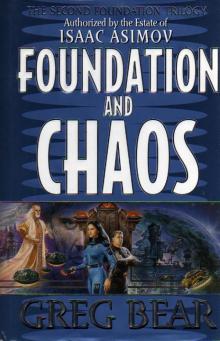 Foundation and Chaos
Foundation and Chaos Halo: Silentium
Halo: Silentium Blood Music
Blood Music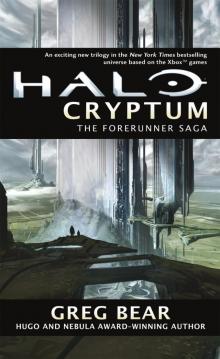 Halo: Cryptum
Halo: Cryptum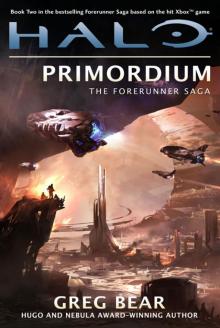 Halo: Primordium
Halo: Primordium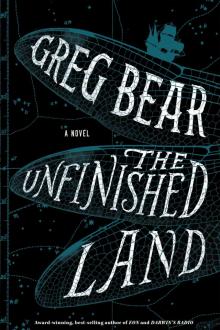 The Unfinished Land
The Unfinished Land Hardfought
Hardfought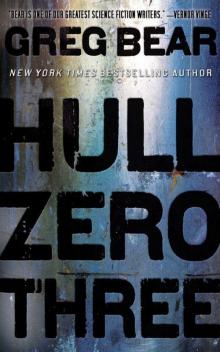 Hull Zero Three
Hull Zero Three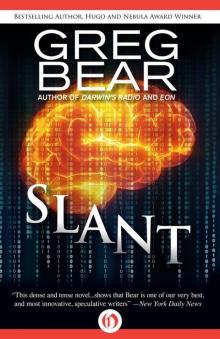 Slant
Slant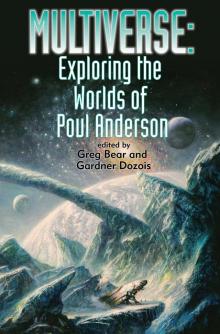 Multiverse: Exploring the Worlds of Poul Anderson
Multiverse: Exploring the Worlds of Poul Anderson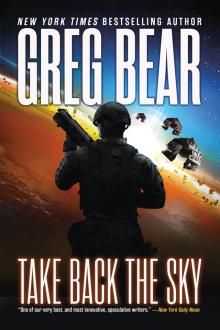 Take Back the Sky
Take Back the Sky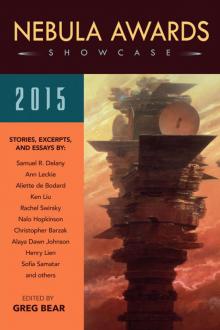 Nebula Awards Showcase 2015
Nebula Awards Showcase 2015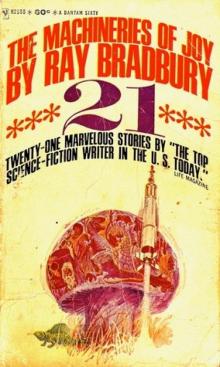 Machineries Of Joy
Machineries Of Joy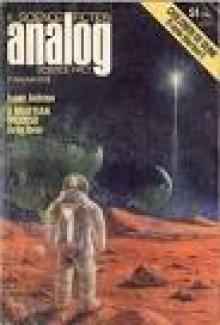 A Martian Ricorso
A Martian Ricorso Eternity
Eternity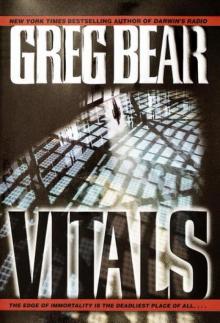 Vitals
Vitals The Infinity Concerto
The Infinity Concerto Beyond the Farthest Suns
Beyond the Farthest Suns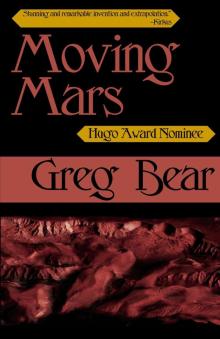 Moving Mars
Moving Mars Quantico
Quantico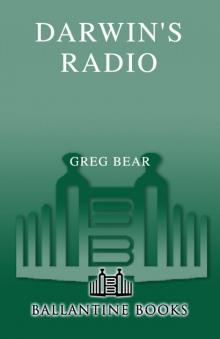 Darwin's Radio
Darwin's Radio Beyond Heaven's River
Beyond Heaven's River Star Wars - Rogue Planet
Star Wars - Rogue Planet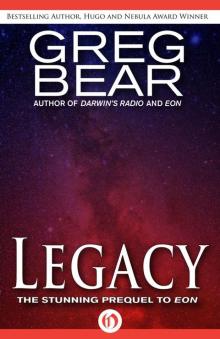 Legacy (Eon, 1)
Legacy (Eon, 1)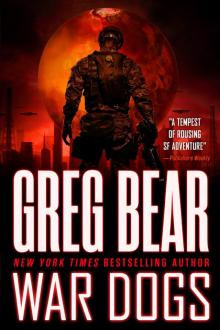 War Dogs: Ares Rising
War Dogs: Ares Rising Sisters
Sisters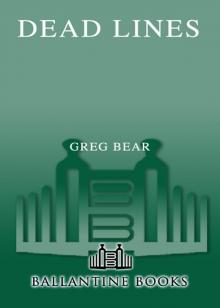 Dead Lines
Dead Lines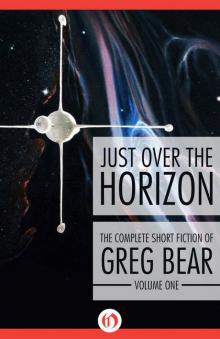 Just Over the Horizon (The Complete Short Fiction of Greg Bear Book 1)
Just Over the Horizon (The Complete Short Fiction of Greg Bear Book 1) Eon (Eon, 2)
Eon (Eon, 2) Venging
Venging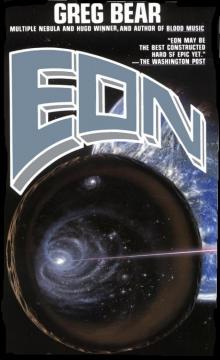 Eon
Eon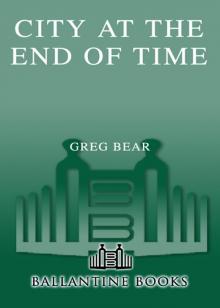 City at the End of Time
City at the End of Time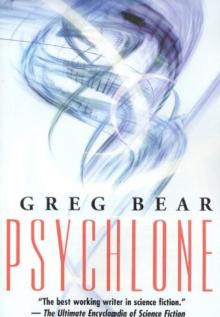 Psychlone
Psychlone Dead Lines, A Novel of Life... After Death
Dead Lines, A Novel of Life... After Death Eternity (Eon, 3)
Eternity (Eon, 3)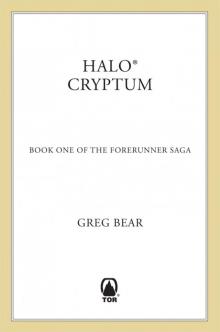 Cryptum
Cryptum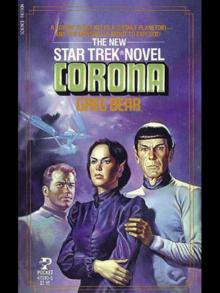 Corona
Corona Sleepside: The Collected Fantasies
Sleepside: The Collected Fantasies Women in Deep Time
Women in Deep Time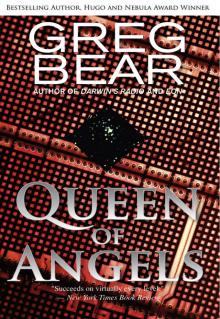 Queen of Angels
Queen of Angels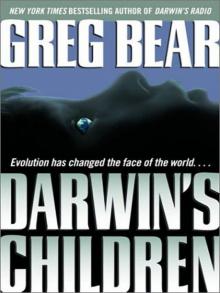 Darwin's Children
Darwin's Children Dinosaur Summer
Dinosaur Summer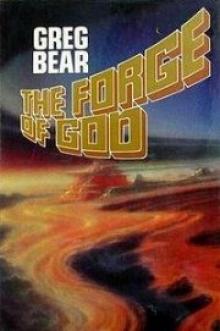 The Forge of God tfog-1
The Forge of God tfog-1 Foundation and Chaos f-9
Foundation and Chaos f-9 Star Wars: Rogue Planet
Star Wars: Rogue Planet The Forge of God
The Forge of God Mariposa
Mariposa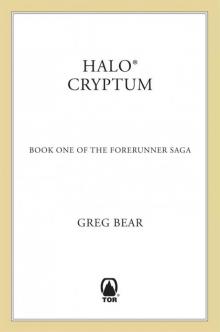 Halo: Cryptum: Book One of the Forerunner Saga
Halo: Cryptum: Book One of the Forerunner Saga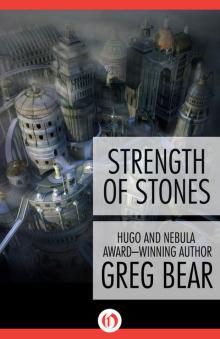 Strength of Stones
Strength of Stones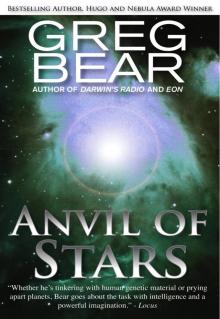 Anvil of Stars
Anvil of Stars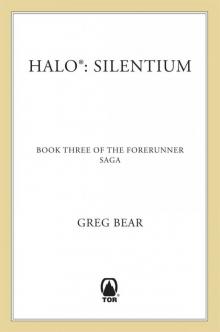 B00AQUQDQO EBOK
B00AQUQDQO EBOK Anvil of Stars tfog-2
Anvil of Stars tfog-2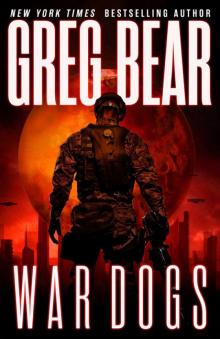 Ares Rising 1: War Dogs
Ares Rising 1: War Dogs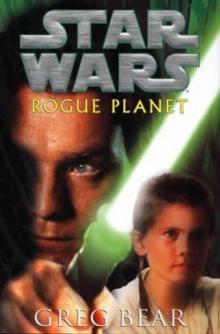 Rogue Planet (star wars)
Rogue Planet (star wars) The Machineries of Joy
The Machineries of Joy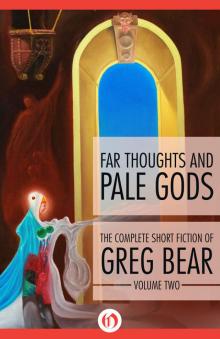 Far Thoughts and Pale Gods
Far Thoughts and Pale Gods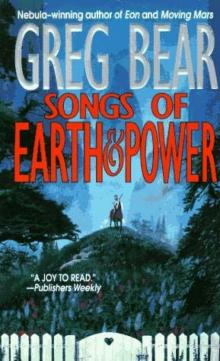 Songs of Earth and Power Omnibus
Songs of Earth and Power Omnibus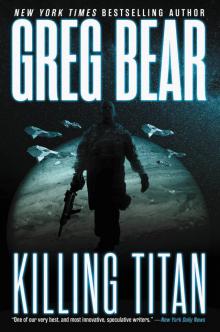 Killing Titan
Killing Titan Darwin's Radio d-1
Darwin's Radio d-1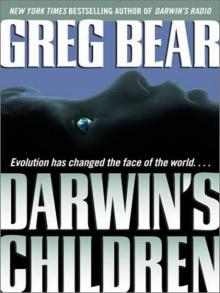 Darwin's Children d-2
Darwin's Children d-2